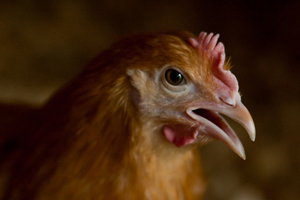Chronic enteritis in laying hens

The current method of dealing with chronic enteritis is based on managing the problem by increasing the resistance and recovery of the hens without knowing the cause. This is the conclusion of two poultry researchers in the Netherlands.
By Dr. Ir. J.D. van der Klis (poultry researcher, Schothorst Feed Research), and Drs N.D. de Bruijn (avian veterinarian, Dutch Animal Health Service), the Netherlands
The Dutch Animal Health Service in Deventer conducted a number of post-mortem examinations on chronic enteritis in laying hens in 2006 and 2007. This research has not resulted in a full understanding of the cause. The Animal Science Group also conducted a questionnaire with a large number of poultry farmers, but only a little more was discovered. Even though we are slowly gaining a better understanding of the syndrome, the actual cause is still unknown. Nevertheless, it had been established that stress has a significant negative influence on the occurrence of the symptoms. These stress situations include the transport of the hens to the laying farm, feed transitions, as well as weather conditions. As long as the cause is unknown, and prevention of the problem remains impossible – we can only try to reduce the symptoms and meanwhile improve the recovery of the hens. The latter can be achieved by supplements in drinking water, supplementation of feed additives and/or modifications in feed composition.
Vicious circle
Some of the observed symptoms of chronic enteritis are decreased production performance, extremely high feed intake, and early dropping of the feathers. The first 20 cm of the small intestine, the duodenum, seems to be stimulated constantly or repeatedly. This results in enteritis in this part of the intestinal tract. Cultivation or microscopical research often shows the presence of Clostridium perfringens and proves to be a great causal factor. The enteritis causes the intestinal mucous membrane cells to regenerate faster, and as a result the cells will not mature completely and their capability will not fully develop. The nutrient absorption will therefore decrease in this part of the intestine. Nutrients will remain in the gastrointestinal tract, forming an excellent breeding ground for the bacteria. This will result in constant stimulation of the immune system, especially in an already disturbed intestinal activity. The hens, consequently, end up experiencing a vicious circle.
Remarkably, intestinal enteritis also regularly occurs in seemingly healthy birds, although they appear to recover. This proves, however, that the intestinal health of laying hens is strained. The reason why one bird is affected whereas another is not remains a mystery. Stress within the bird is a probable factor.
Acute phase protein
Broiler research shows that a certain inflammatory response (acute phase response) strongly increases the use of amino acids. In this stage, the liver produces ‘acute phase proteins’ where the body is informed of the inflicted damage and of the reaction necessary to recover. Copper is one of the most important ingredients of acute phase proteins. In some birds suffering from chronic enteritis practically no copper was found in the liver, probably due to increased consumption.
Order of priorities
The body uses nutrients according to a certain order of priorities for maintenance and growth of organs. The brain, the heart and the gastrointestinal tract and an activated immune response system have the highest priorities in this respect. Reproductive organs, feathers and the skeleton are next in line, whereas the growth of muscle tissue has a lower priority.
Normally there are enough nutrients for all the organs. Animals with chronic enteritis, however, have an increased requirement for nutrients for the activated immune system, and on the other hand, a decreased absorption of nutrients in the intestine. Consequently, only the organs with the highest priorities will be served. This will firstly prove to be the case in the growth of muscle tissue, production and maintenance of the feathers, and (re)production.
The lowest priority for growth of muscle tissue is indicated by a sub-optimal muscle system, or excess abdominal fat. In addition, feathers drop off and egg production (reproduction) collapses.
Problem management
The current method of dealing with chronic enteritis is based on managing the problem by increasing the resistance and recovery of the hens without knowing the cause. Schothorst Feed Research and the Dutch Animal Health Service are conducting research to study the possibilities of stimulating the immune response of the hens by the use of certain nutrients or additives. With modifications to the protein and amino acid supply, the used energy sources, and mineral and vitamin supply through feed or drinking water, we try to influence the function of the affected intestine as much as possible. The effect will be evident in the recovery of the intestinal villi. With highly digestible and available proteins the deficiency will be somewhat supplemented. This may also be the reason why birds that have been diagnosed positive in an early stage respond better. Early diagnosis and monitoring on intestinal level are therefore crucial.













